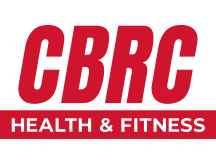Because, in case you missed it, you’re training for a triathlon.
If you need to catch up on the last three triathlon posts, you can do that here, here, and here.
The run is the last leg of the triathlon, and it can be anywhere from a 5k to a full marathon, depending on the race you’re running.
When training for a distance run, the biggest thing to remember is not to injure yourself. It’s easy to do if you try to do too much too fast. You only have two knees, and replacements are expensive, so train right. Get used to the impact of running slowly.
Whether starting with a 5k or 10k, first make sure you can walk that whole distance. Do it a few times.
For some people, this may seem like a silly way to start, but it’s crucial not to skip it. Give your legs and knees a chance to adapt to the distance.
Once you’ve been able to walk the distance a few times, now you can start running. But again, start slow.
For the first 1-2 weeks, you’re going to go in five-minute blocks. First you walk four minutes, then run one minute. Repeat that for the whole distance.
Next you stay in the five-minute blocks, but now you walk three and run two. After a week or two, you walk two and run three.
See a pattern here?
Once you’re comfortable with the five-minute blocks, and you can run for four and walk for one, switch to ten-minute blocks.
Then repeat the whole process. Every week or two, you add a minute of running, and take away a minute walking.
Once you’re able to run the whole distance, then you can start increasing your speed and setting time goals.
Once you get into the half marathon and longer ranges, you need to have a training plan. You can find several online, or you can talk with one of our trainers. The general idea is that you train for a period of five-eight weeks or so.
You can have sprint days, hill days, and long run days. You want to increase your distance a little each week, but never increase more than 10% in a week. You put yourself at risk for injury by doing that.
You want to get in three long runs before the race. The two last weeks are taper weeks. Don’t run as far, take a break. It may seem counterintuitive, but it’s important to give your body a chance to rest and heal before that big race.
Again, find a good plan that works for you and stick with it.
Now let’s talk about shoes.
If you don’t wear the right shoes, you set yourself up for lots of knee and hip issues.
Everyone’s feet are different. Everyone’s running style is different. So, go to a shoe store that specializes in running shoes. Runner’s Soul in Kennewick is a great place to start.
They’ll measure your feet, and make sure you get just the right shoes. It may cost a little more than Walmart, but it will be well worth it not to have the pain in your knees and hips.
Good running shoes should last you about 300-400 miles. Don’t keep your shoes too long. Once they start to break down, you start putting yourself at risk for injury.
Lastly, running decreases your mobility. So as you train, add in yoga, stretching, and foam rolling to keep more mobile.
Swimming. Biking. Running.
A triathlon tests all your skills and endurance. And when you finish, there’s no more rewarding feeling.
And now you have the tools you need to train for your first triathlon. If you have nay questions, don’t hesitate to talk to any of our trainers. They’re here to see you succeed.
See you at the finish line.
We wish you good health,
Columbia Basin Racquet Club

